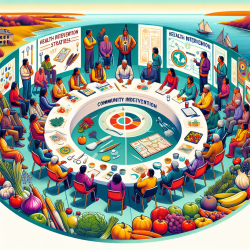Understanding the Impact of SNAP on Food Insecurity Among Children
The Supplemental Nutrition Assistance Program (SNAP) is a vital resource for millions of families in the United States, aimed at improving household diet and food security. However, a recent study titled Does Supplemental Nutrition Assistance Program Reduce Food Insecurity among Households with Children? Evidence from the Current Population Survey reveals some startling findings that practitioners in special education and beyond should be aware of.
Key Findings and Implications
The research, conducted using data from the 2009–2011 Current Population Survey Food Security Supplement, highlights a paradoxical situation. While SNAP participation seems to reduce food insecurity among adults, it may actually increase the likelihood of low and very low food security among children. This contradiction suggests that the program's impact is not as straightforward as previously believed.
For practitioners, this presents an opportunity to delve deeper into the factors contributing to these outcomes. Understanding the socio-demographic variables that affect food security differently for SNAP participants and non-participants can inform more targeted interventions.
Encouraging Further Research
The study underscores the need for further analysis, particularly using longitudinal data, to better understand the complex dynamics at play. Practitioners are encouraged to explore the following areas:
- Investigate the role of state policy tools like broad-based categorical eligibility (BBCE) and simplified reporting in promoting SNAP participation and reducing food insecurity.
- Examine the socio-demographic variables that influence food security, such as age, education level, and household structure.
- Consider the potential impact of SNAP on diet quality and nutrition, especially among children.
Practical Steps for Practitioners
As practitioners, there are several actionable steps you can take to leverage these findings:
- Advocate for policy changes that address the specific needs of children in SNAP households.
- Collaborate with local agencies to provide additional support and resources to families with children experiencing food insecurity.
- Engage in community education efforts to raise awareness about the complexities of food insecurity and SNAP participation.
Conclusion
The findings from this study provide a crucial insight into the limitations of SNAP in addressing food insecurity among children. By encouraging further research and implementing informed strategies, practitioners can play a pivotal role in ensuring that all children have access to the nutrition they need for a healthy and active life.
To read the original research paper, please follow this link: Does Supplemental Nutrition Assistance Program Reduce Food Insecurity among Households with Children? Evidence from the Current Population Survey.










